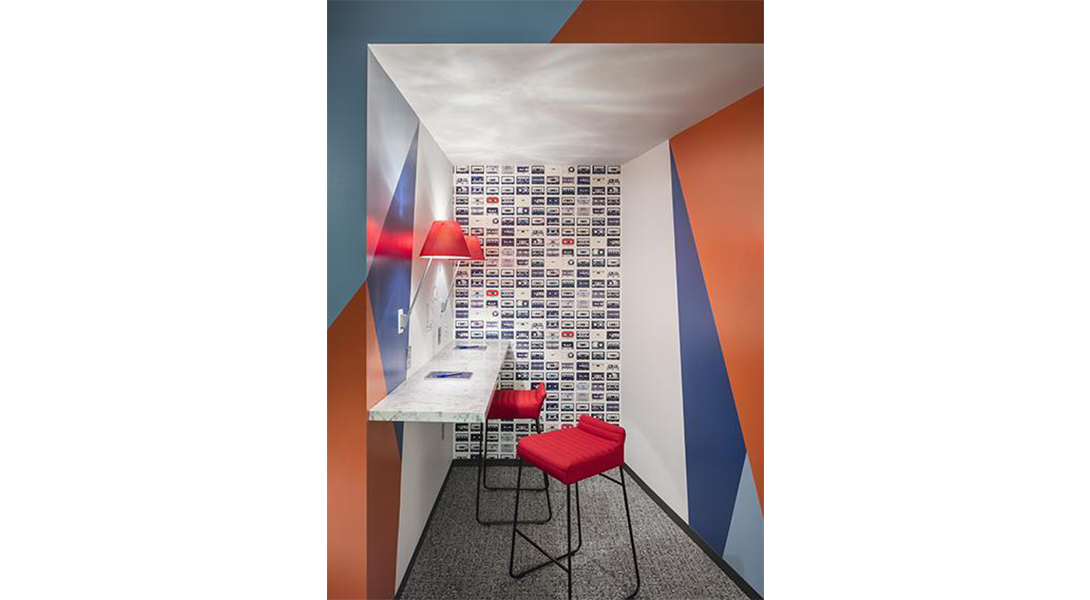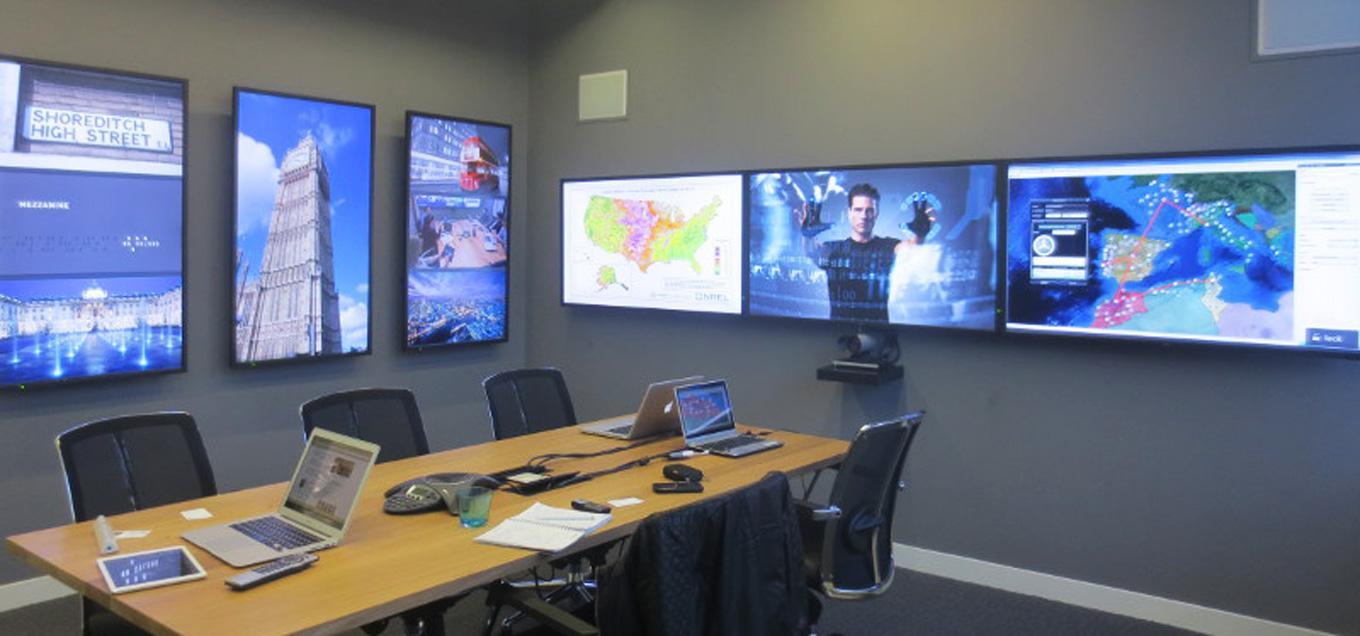On a crisp fall day in November, hundreds of Boston employees and leaders gathered at Design Museum Boston’s Workplace Innovation Summit in Microsoft's New England Research & Development (NERD) Center to share and learn how we can foster workplace innovation through our environment, tools, and behavior.
Three prevalent themes to ponder:
ENVIRONMENT MATTERS TO WORKPLACE INNOVATION
It feels like home. From the warm lighting to the expansive river views, the Microsoft NERD Center welcomes employees and guests the moment they exit the elevator. Designed by planning and design firm Sasaki, it is a work environment unlike any I have seen. The variety of colors and texture speak more to a penthouse home or hotel suite than it does a typical corporate office. The usual plagues of the ubiquitous corporate environment are nowhere to be found: there is no harsh overhead fluorescent lighting, no monotony in desk configuration, no rooms without a view, and no sterility.
Instead, the space has variety and adaptability - large open gathering spaces serve as all-employee meeting rooms just as equally as they serve as hangout spots clad with chess tables, high top counters for eating lunch, and a large screen TV for watching the big game, or playing video games. I can dually imagine working at a booth on the balcony overlooking the river just as much as playing a game of pool with colleagues after a day’s work. There are also low-lit nooks for privacy and meeting rooms for team collaboration.

The Microsoft New England Research and Development Center (NERD) in Cambridge, MA has long been a center of technology innovation. (Sasaki Images)
The variety of color, texture, and space brings vibrancy to the office, and provides an ideal environment for cultivating workspace innovation in creative ways. There is equal use of the digital and tactile. Design thinking, user experience journey mapping, product ideation and development, and coding snippets are scribbled on whiteboards just as much as they are painted colorfully across individual laptop screens. Meaningful ideas are born at the Microsoft NERD Center where late nights are a lot less painful, and dare I say…enjoyable.

A quiet, private space for focus at the Microsoft NERD Center. (Sasaki Images)
TECHNOLOGY IS A TOOL, NOT A SOLUTION. (Design thinking provides solutions.)
Technology is at the core of Microsoft, but despite its centricity, Sasaki Principal, Victor Vizgaitis, emphasized how we need to embrace human-centered design. Our culture equates technology with higher output and increased efficiency. We view it as a solution to many of our problems. While there is certainly truth to this statement, Vizgaitis warns that we may actually be at the mercy of the tool itself, hindering creativity and narrowing the way in which we work. High-tech does not mean meeting rooms covered in touch-screens and monitors. He challenged us to consider at what point technology stops enabling workers, but instead limits their capabilities. Workspace innovation is all about creating environments that enable productive collaboration.

This room may look high-tech, but how is it really enabling collaboration? (Victor Vizgaitis)
Sasaki emphasized the mixed-use of materials and mediums throughout the Microsoft office. There are just as many whiteboards and tinker spaces as there are screens and monitors. The tactile is just as important as the digital. By providing these choices in mediums, employees are not slaves to technology, but instead leaders of their own (creative) work style. They are empowered to express and develop ideas through a dynamic and mixed-use environment. Vizgaitis argues that this notion also inherently celebrates diversity of thought within the workplace, which leads me to my next takeaway from the Workplace Innovation Summit…
BIAS IS INTRINSIC // ‘HUMAN’ COMES FIRST
As humans, we are all subject to bias. We may automatically think we know something about someone, assuming that, “because they are ‘A’ ...they must necessarily be or do ‘B.’”
Jose Ramos, Co-Founder of Mindfulness and Leadership, recounts a story in which he and his friends had a guacamole-making competition. His friends said, “Oh, Jose is definitely going to win because he’s Mexican.” Jose laughed it off, but it got him thinking about the ease with which that statement translates to other environments. While it may be socially forgivable amongst friends, those types of statements are not appropriate in the work place.
Becoming aware of your own personal bias is a key skill when you’re taking part in a research for a consumer product or seeking to inspire innovations in design and development. Ramos encourages us to heighten our awareness of personal bias using this framework:
Think ‘human’ first
Ramos emphasizes the importance of prioritizing humanity over social identity (i.e. gender, race, social class, etc.)
Don’t judge yourself for your first thoughts
You may well have initial thoughts that don’t follow this human-first approach, so be aware of them and be easy on yourself. Building this self-awareness is crucial to growth and workspace innovation strategies.
Be curious (when appropriate)
If you do not understand something, ask questions. Generally, people are more than willing to share their experiences more often than you might think. This can help you identify why you may have established bias toward them in the first place.
Opening up these channels of communication should not be viewed as denigrating, but as illuminating and vital to the development of mutual understanding and communication.
And finally, a little something to leave you craving more....
NATURAL LIGHT
We all know we’d rather live in a room with windows than one without. We are generally happier during the longer days of summer than the suffocating short days of winter. We crave natural light and Silicon Valley company View capitalizes on this basic human desire. View has "reinvented something that hasn't changed for centuries - the simple window.” The company understands light’s benefits to health, wellness, and productivity in the workplace. Their innovative, smart windows automatically adjust their tint in response to the sun. Gone are the ugly and cumbersome blinds and in is the calming and revitalizing connection to the natural world.

Galen Burrell, Manager of Lighting Design at View, explained that better work starts with more natural light. (View.com)
______________________________
Katja Lierhaus is an Engineer at Essential Design.
Essential Design is a leading Innovation Strategy & Design consultancy. We work across the healthcare, consumer, and commercial industries, helping our clients conceive and drive to market comprehensive digital, physical, and service experiences.


